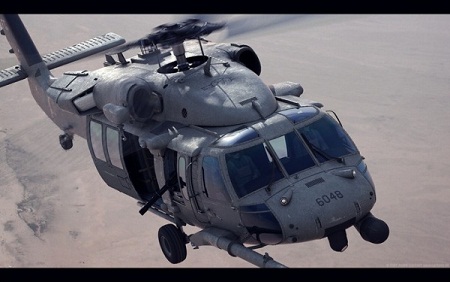4 Die in Air Force Medevac Crash in Afghanistan
June 11, 2010 by Da-Chief
Filed under Air Force News, Army News, Coast Guard News, Corpsman.com News, Marine Corps News, Military Information, National Guard News, Navy News
All,
I have said before and will say it again, it is hard as heck to get info about the Air Force for our site. But I wanted to recognize these heroes who gave their all in support of the Medevac mission in Afghanistan.
6/11/2010 – WASHINGTON (AFNS) — Department of Defense officials announced June 9 the deaths of four Airmen who were supporting Operation Enduring Freedom.
They died June 9, near Forward Operating Base Jackson, Afghanistan, in a helicopter crash.
Killed were:
–Staff Sgt. Michael P. Flores, 31, of San Antonio, Texas, assigned to the 48th Rescue Squadron, Davis-Monthan Air Force Base, Ariz.
–1st Lt. Joel C. Gentz, 25, of Grass Lake, Mich., assigned to the 58th Rescue Squadron, Nellis AFB, Nev.
–Staff Sgt. David C. Smith, 26, of Eight Mile, Ala., assigned to the 66th Rescue Squadron, Nellis AFB.
–Senior Airman Benjamin D. White, 24, of Erwin, Tenn., assigned to the 48th RQS, Davis-Monthan AFB.
More info can be found in the Air Force Times:
The Pentagon has named the four rescue airmen who were killed Wednesday when insurgents shot down their HH-60G Pave Hawk in southern Afghanistan.
Three airmen also were injured in the Pave Hawk incident, which occurred on the deadliest day for Air Force personnel at war in more than five years.
The four killed are:
* 1st Lt. Joel C. Gentz, 25, of Grass Lake, Mich.
* Staff Sgt. David C. Smith, 26, of Eight Mile, Ala.
* Tech. Sgt. Michael P. Flores, 31, of San Antonio.
* Senior Airman Benjamin D. White, 24, of Erwin, Tenn.
Flores and White were assigned to the 48th Rescue Squadron at Davis-Monthan Air Force Base, Ariz. Gentz was assigned to the 58th Rescue Squadron at Nellis Air Force Base, Nev. Smith was assigned to the 66th Rescue Squadron at Nellis.
The wounded airmen are members of the 66th Rescue Squadron. They are being treated at Landstuhl Regional Medical Center, Germany.
The helicopter crashed as the airmen, assigned to 563rd Rescue Group, were performing a medical-evacuation mission in turbulent Helmand province.
“Our Air Force was deeply saddened by the loss of four of our own,” Chief of Staff Gen. Norton Schwartz said in a statement. “Faithful to the rescue motto ‘That others may live,’ these airmen were courageously and selflessly flying in support of their joint and coalition teammates. We grieve for our warriors and our thoughts and prayers are with their families, as well as with the airmen still recovering.”
You can read the rest of the article here: Air Force Times
Please stop and say a prayer for these heroes.
Da-Chief
Corpsman.com








“THE HANDCART BOYS”
He's lying in the tree line, blood running down his arm.
Listening for the sound of the Handcart boys, to remove him from this harm.
He flew in on a modern jet that got shot down in this affray.
But he is no different than the wounded at Shiloh, trying to survive, till they safely take him away.
In the dark of the night she waits with so much pain to bear.
Injured in the crash of her aircraft and now this seemly endless nightmare.
Where is the chopper that will lift her from the smoke, the fire and the pain?
Where are the Handcart boys, hurry, her life is beginning to drain?
He was wounded when a round slammed onto the “cruiser's” deck.
Shards of metal are protruding from the right side his neck.
The corpsman has stopped the bleeding; he's been prepared, to be extracted in the night.
The Handcart boys are racing his way, and will be there by first light.
Get in, get them out, and hurry back, to the safety of our lines.
It has been this way since ancient wars, to the battles of modern times.
The two-wheel Handcart is the way the wounded were removed from battles in past wars.
Our modern Handcart has a rotor-blade and sliding doors.
Look at history, look at art work, or at movies if you will.
When it came to removing the wounded off of some war torn desolate hill.
It was a Handcart carrying the broken and the dying with their screams of pain.
It was a Handcart transporting at Normandy in the cold June rain.
Every branch of the service has its modern version of the Handcart boys who respond to the call.
They go out for the wounded and dead, bring them back, get them all.
Some times the Handcart boys are brought back in a Handcart not of their own.
Some times they become the wounded & the dying, and for their efforts, they never come home.
There are also women who work these, latter-day Handcarts and their lives too, are on the line.
It is a dangerous mission, but just as their predecessors they to make that recovery in time.
They move out over the desert, into the night as the sand blows and swirls.
These Handcart operators are our Handcart girls.
I have a two-wheeled wooden handcart with an old worn flag sitting out on my front lawn.
It is not a protest, it's a reminder of our injured, who returned by Handcart, lying there upon.
In order to defend this Nation, we will continue to send the brave & young, our freedom they earn.
And we will always have a need for the Handcarts, for our wounded and dead, they must return.
Major Van E. Harl, USAF Ret. 15 March 2003
Vanharl@aol.com